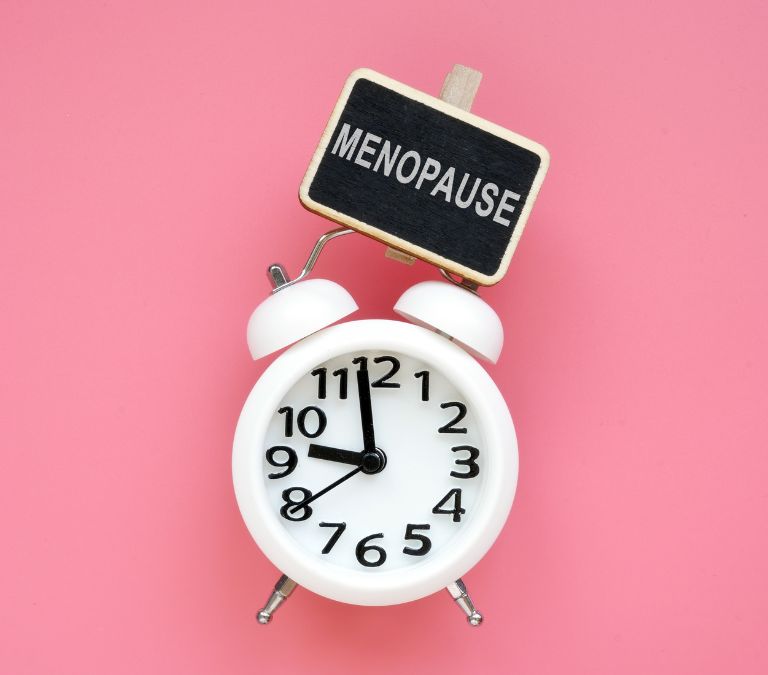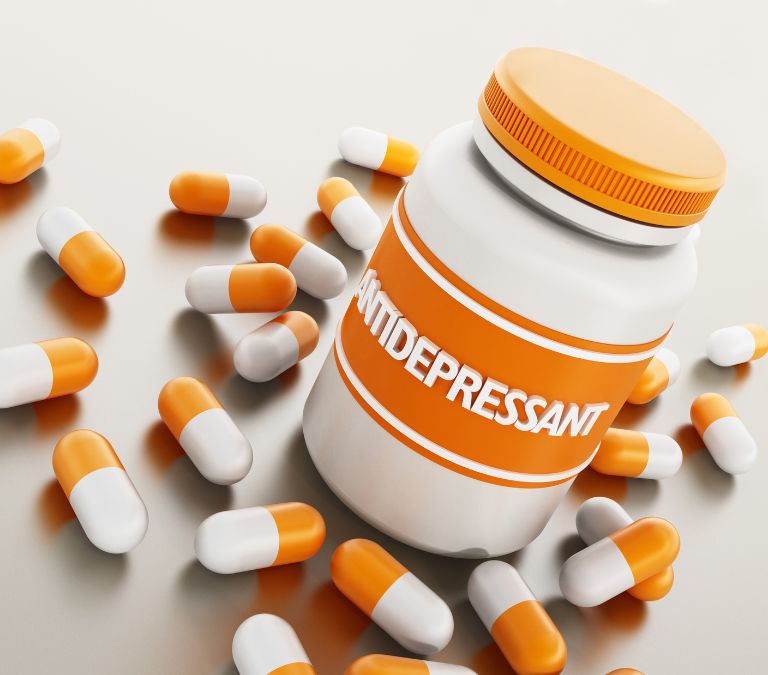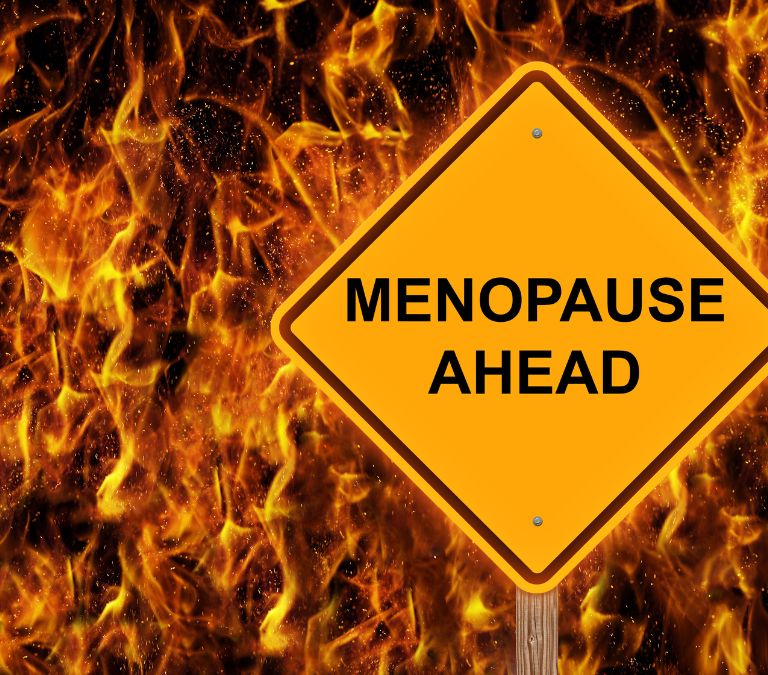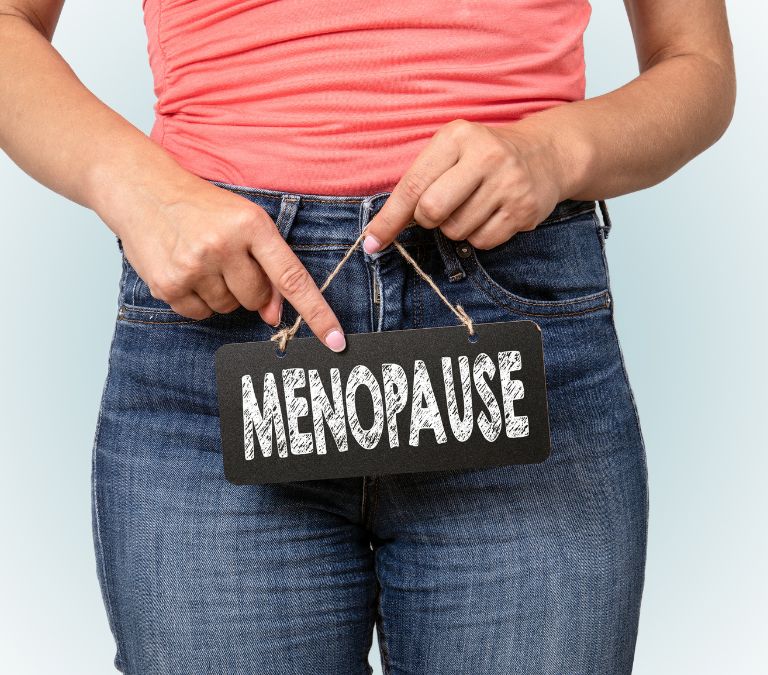The biological system of a woman is phenomenal. From the onset, every stage is timely, especially during the secondary developmental stages.
At birth, the reproductive system of a female is immature until puberty, which happens between the ages of 8 and 16. The early stages of puberty produce very visible signs. Following this stage is a rise in hormone levels, which prepares the body internally for about two years before menarche – the first menstruation.
With age, the hormone levels of a woman drop and are usually the first symptoms of menopause. This natural decline occurs between 40 and 50 when the perimenopausal, menopausal, and postmenopausal stages commence.
Menopause is a natural process accompanied by aging that majorly occurs when a woman is in her early fifties. The absence of menstrual flow (period) for a complete year defines the menopausal stage. However, this does not include women who surgically remove their ovaries or suffer from medical conditions that affect menstrual flow. The cessation of menses or period after surgery is called sudden surgical menopause. This condition is incurable and usually self-diagnosable.
What are the first symptoms of menopause?

The perimenopausal stage occurs when the first signs of menopause are experienced. It is referred to as the phase around menopause when a woman’s body gradually transits towards the end of her reproductive stage. The age at which this occurs varies in different women, but it mostly occurs from around the mid-thirties to the early forties.
During perimenopause, estrogen levels fluctuate – unevenly rising and falling. It could result in the shortening or lengthening of menstrual cycles, and in some cases, a woman at this stage may menstruate without ovulation.
Perimenopausal Diagnosis
The exact determination of perimenopause is not certain. No sign or test is enough medical proof to tell that a woman has entered her perimenopausal stage. It is a gradual transition that will become evident in the coming years. However, doctors consider several factors, including symptoms, menstrual history, age, and other body changes. Although a test is not necessarily required for perimenopausal evaluation, sometimes, it is done to check the hormonal levels, particularly thyroid function.
Perimenopausal Symptoms
- Hot flashes
Hot flashes are a common symptom experienced at perimenopausal and menopausal stages. A hot flash is a rapid or sudden feeling of heat. Sometimes, it is accompanied by sweating and a red flushed face and neck. Chills and rapid heart rate could also occur. The causes of hot flashes are not exactly known, but it is believed that certain changes in circulation could be related to them.
The sweat that breaks out is caused by the widening of blood vessels near the skin’s surface. These blood vessels usually widen to cool off. When this occurs at nighttime, it disturbs sleep, causing night sweats. This symptom could linger for an average of seven years through perimenopause and menopause. Depending on several factors, it could occur for a shorter period or last as long as eleven years. Caffeine, intake of spicy foods, smoking, tight clothing, anxiety, stress, and alcohol are factors that could trigger hot flashes.
- Mood swings
A decline in estrogen levels can induce premenstrual syndrome symptoms, particularly emotional changes. Mood swings, irritability, difficulty in concentration, aggressiveness, lack of motivation, and anxiety are often experienced. Although mood swings or disorders are not only associated with menopause, they are good indicators.
- Irregular periods
The perimenopausal phase also affects the regularity of a woman’s menstrual cycle. It is caused by the unsteady and random changes in hormone levels, resulting in unpredictability in ovulation. Irregularity in menses is characterized by shorter or longer periods. If seven days or more changes persist in a woman’s menstrual cycle, it could indicate early perimenopause. On the other hand, a woman could be in her late perimenopausal phase if there is a space of about sixty days or more in between periods.
- Fatigue
Several causes of severe tiredness, such as aging and lack of sleep, are unrelated to any underlying disease. The aging process and sleep disturbances experienced during the perimenopausal and menopausal stages are possible causes of fatigue.
- Bone loss
During the perimenopausal phase, a woman may experience an increased risk of osteoporosis due to bone loss, which happens much quicker than bone replacement.
- Decreased fertility
With unpredictable ovulation and irregular periods, a woman’s fertility naturally declines. It is the decrease in the ability to conceive.
- The decline in sexual function or activities
Sexual desire and arousal (libido) change and are most likely reduced during perimenopausal change. It also is closely related to the erratic changes in hormone levels. However, this and other symptoms might not be the same in other women.
- Change in Cholesterol level
Blood cholesterol levels experience disadvantageous changes. These changes include increased LDL(low-density lipoprotein). An increase in LDL is bad for the heart; in this case, a woman experiencing this may be at risk of heart disease. As LDL increases, HDL(high-density lipoprotein), which is good for the body and should be on a high, decreases, and this could also lead to the risk of heart disease.
- Problems with the bladder and vagina
Vaginal tissues are subjected to loss of elasticity and lubrication due to decreased estrogen levels. It could make intercourse a painful experience for a woman. In addition, this could increase vulnerability and risk of urinary and vaginal infections.
Treatment

There are several medications used in the treatment and management of perimenopausal symptoms. Before undergoing treatment of any form, be sure you consult your doctor. The consultation ensures risks, benefits, and preferable options are properly discussed and considered.
- Antidepressants: this is for the management of hot flashes and mood disorders. Drugs related to Selective Serotonin Reuptake Inhibitors (SSRIs) can reduce hot flashes experienced during the perimenopausal and menopausal stages. This option is available for women who experience mood swings or disorders and cannot take estrogen for health reasons.
- Gabapentin: Gabapentin or Neurontin has been medically approved and applied to treat seizures. It has also proven helpful in the reduction and management of hot flashes. It is used alternatively for women who often suffer migraines or are not allowed to take estrogen for certain health reasons.
- Vaginal estrogen: the direct administration of estrogen can be through vaginal creams, tablets, or rings. It causes a minimal release of estrogen, which is then absorbed through the tissues of the vagina. This treatment manages urinary symptoms, vaginal dryness, and pain or discomfort during intercourse.
- Hormone Therapy: this is the most effective option for treating and managing menopausal and perimenopausal night sweats and hot flashes. Also, it has proven to be efficient in preventing bone loss. It is otherwise referred to as systemic estrogen therapy. The effective dose varies with different women, and some women with certain family or personal medical histories are administered estrogen at very low doses but just enough to produce relief. Depending on a woman’s system, progestin could be given in addition.
Signs Perimenopause is Ending
The perimenopausal stage continues until menopause. The cessation of egg release by the ovaries puts an end to perimenopause, and this is where menopause begins.
An accelerated decrease in estrogen levels is a sign that perimenopause is coming to an end. It is more severe than as experienced in the early and middle stages. The average period at which perimenopause lasts is four years (it could be more for some women), and these signs could occur between the last year or the last two years before menopause eventually sets in.
How Long Do Symptoms of Menopause Last?
The intensity of menopausal symptoms, frequency, duration, or period of occurrence differs widely. After the cessation of menstrual flow for twelve months and menopause begins, the average duration at which menopausal symptoms last is about four to five years.
However, like with most other conditions, symptoms may last longer for other women, sometimes up to ten years.
What are the signs of coming to an end of menopause?
Postmenopause occurs when a woman has experienced a cessation of menstrual flow. At this stage which follows menopause for the rest of a woman’s life, gradual ease of menopausal symptoms is experienced.
Although these symptoms may continue for a few years, subsiding symptoms indicate that the menopausal stage is about to end.
Signs of Premature Menopause
Premature menopause is the onset of menopause before the age of 40. It is also known as premature or primary ovarian insufficiency. Women between the ages of 35 and 45 who experience irregularities in their menstrual cycle or have missed their period for about three months may be experiencing the early menopausal stage.
Reportedly experienced by only 1% of women, premature menopause is not common.
Signs of Early Menopause at 30
Follicle dysfunction or follicle depletion are common causes of early menopause. Immaturity or lack of release of eggs would result at the end of the menstrual cycle. This depletion or dysfunction could result from genetic disorders, exposure to toxins, family medical history, surgery, infection, or autoimmune conditions.
Symptoms of early menopause at the age of thirty are similar to regular symptoms of menopause.
These symptoms include;
- Amenorrhea or absence of periods
- Body aches and pains
- Vaginal dryness
- Mental fogginess
- Sleep disturbances
- Hot flashes
- Irregularity in the menstrual cycle
- Decrease in sex drive
- Mood disorders/ mood swings
Signs of Menopause at 40-65

Just as many women experience menopause or perimenopause early, some women (a small percentage) experience it late in their forties or older.
Since perimenopause lasts for several years before menopause sets in, a woman experiencing perimenopause at forty would most likely have menopause in her late forties or early fifties, maybe older.
At age 50 or thereabout, if a woman hasn’t reached menopause, there is every possibility that the final transition into the stage is being made. Menopausal symptoms could last up until the ages of sixty to sixty-five; an estimate of about 40% of women experience hot flashes between these ages.
Signs of menopause between the ages of forty and sixty-five are similar to other perimenopausal and menopausal symptoms. They include;
- Hair loss
- Difficulty in sleeping
- Hot flashes
- Mood changes
- Irritability
- Bladder and urinary problems
According to research, prolonged exposure to normal estrogen levels reduces the risk of developing heart diseases and osteoporosis. Due to this, late menopause has been linked by studies to a lower risk of health conditions.







